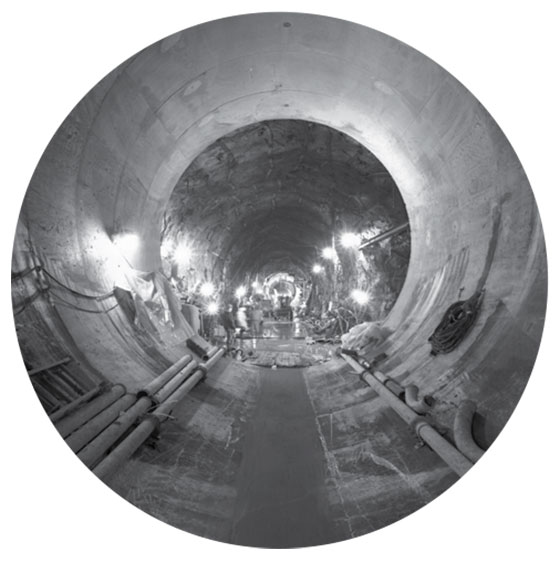 |
(Photo: Fred Conrad/The New York Times) |
New York City could limp along for a few weeks without its subways. Without garbage pickup, a stinky week or so. (The rats would be happy.) Without power, we know, things get bad after a day or two. But water? Four hours, maybe. If the flow stops, so does city life.
At the start of this year, all of our water came from upstate through two big tunnels. No. 1 was completed in 1917, No. 2 in 1936. They’re really old, and they can’t be closed for inspection, because the valves are too fragile. Besides, they might collapse if they’re emptied. Tunnel No. 3, sketched out in 1954, is meant to take the load off the first two. Digging began in 1970, then stopped in 1975, amid the fiscal crisis and a labor dispute. Meanwhile, No. 1 and No. 2 just got older and older, leakier and leakier. Work on No. 3 started up again in 1979; the state took over in 1981, projecting completion in 1988. More delays. A kid fell into one of the excavations and was killed in 1991. Over the years, 23 construction workers—sandhogs, they’re called—died on the job. The whole thing never quite ground to a halt, because some of us knew: One crack in Tunnel No. 1’s concrete lining, and New York was done for.
When Mike Bloomberg became mayor, he asked his advisers what could bring the city to its knees. They told him about the old tunnels, the bad valves. An extra couple of billion dollars made their way to No. 3. And on October 16, Bloomberg stood in City Hall Park and spun a valve. A water fountain sprang to life. It made page A26 of the Times. You probably didn’t know you could finally relax—that at last, we had a measure of safety, pushing back the four-hour crisis indefinitely. But you could.

